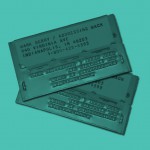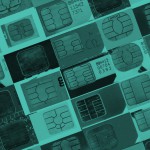Today, sophisticated merchant services and mobile POS systems rely upon digital information transfers via the internet or phone lines. To those of us who have watched this technology develop, the existence of mobile merchant accounts that allow businesses to accept payments via smartphones from almost anywhere in the world almost seem like a miracle.
In order to get a picture of how far merchant services have come, it is interesting to take a look back at more primitive processes, which eventually evolved into the fast and worldwide credit card processing solutions that we provide to our current customers.
 Early Manual and Semi-Automated Credit Card Processing Solutions
Early Manual and Semi-Automated Credit Card Processing Solutions
Most credit card transactions today are processed digitally by sophisticated electronic POS systems. Before that, accepting credit required quite a bit of manual effort, and most of the processes were at risk for errors and outright fraud. It may be that the development of reliable and safe electronic processes paved the way for the boom in worldwide credit card use by average consumers.
Store Credit Processing With Charge Plates
Before the 1950s, the ancestor of the modern plastic charge card was made of solid metal, flimsy paper or cardboard stock. Processing paper credit cards was an entirely manual effort with employees recording transactions and customer information on forms that got sent off for manual processing.
 In the 1930s and 40s, some stores issued charge plates to customers, perhaps the first example of semi-automated processing. These were simply small metal plates with a customer’s name and address engraved on the face. When a customer wanted to use their credit plate to make a purchase, a store employee would run it through a small machine that used an inked ribbon, sort of like an old typewriter ribbon, to make an impression on a sales slip with carbon copies.
In the 1930s and 40s, some stores issued charge plates to customers, perhaps the first example of semi-automated processing. These were simply small metal plates with a customer’s name and address engraved on the face. When a customer wanted to use their credit plate to make a purchase, a store employee would run it through a small machine that used an inked ribbon, sort of like an old typewriter ribbon, to make an impression on a sales slip with carbon copies.
After filling in the totals, the employee would hand a copy to the customer as a receipt. In order to keep track of each customer’s debts and mail statements, the original form and other copies got retained by the store to be processed manually.
Customers were expected to visit the store or mail money to make prompt payments by the end of the billing cycle. Some stores employed “collection carts” that traveled door to door to collect overdue debts.
Interestingly, charge plates are not entirely worthless today; many collectors are interested in them for their historical or artistic value.
 How Was the First Plastic Processed?
How Was the First Plastic Processed?
Even after plastic credit cards became common, processing did not change that much. Until a few years ago, many stores ran credit cards through small machines to produce an imprint on special forms. Copies of these forms still served as receipts and documents used to manually process and record credit transactions.
The biggest difference in the latter part of the 20th century, and early 21st century, was the that credit card processing companies employed data entry people who would manually enter information from these receipts into computer systems, instead of simply recording them in ledger books.
Abtek Moves Merchant Services Into the Future
At Abtek, we work with the latest innovations for safe, fast and reliable credit card processing systems. Though we provide the latest advancements in digital online payments, we also remember the past. One thing that hasn’t changed for our company over the decades is the importance of great customer service, which is why we treat every one of our valued merchant partners as if they are our only customers. Contact us to learn how we can improve your business and protect your bottom line.
Read more in this series:
⋅ The History of Credit Cards, Part 1: How Did People Pay Before Credit Cards?
⋅ The History of Credit Cards, Part 3: The Evolution of True Digital Credit Card Systems













